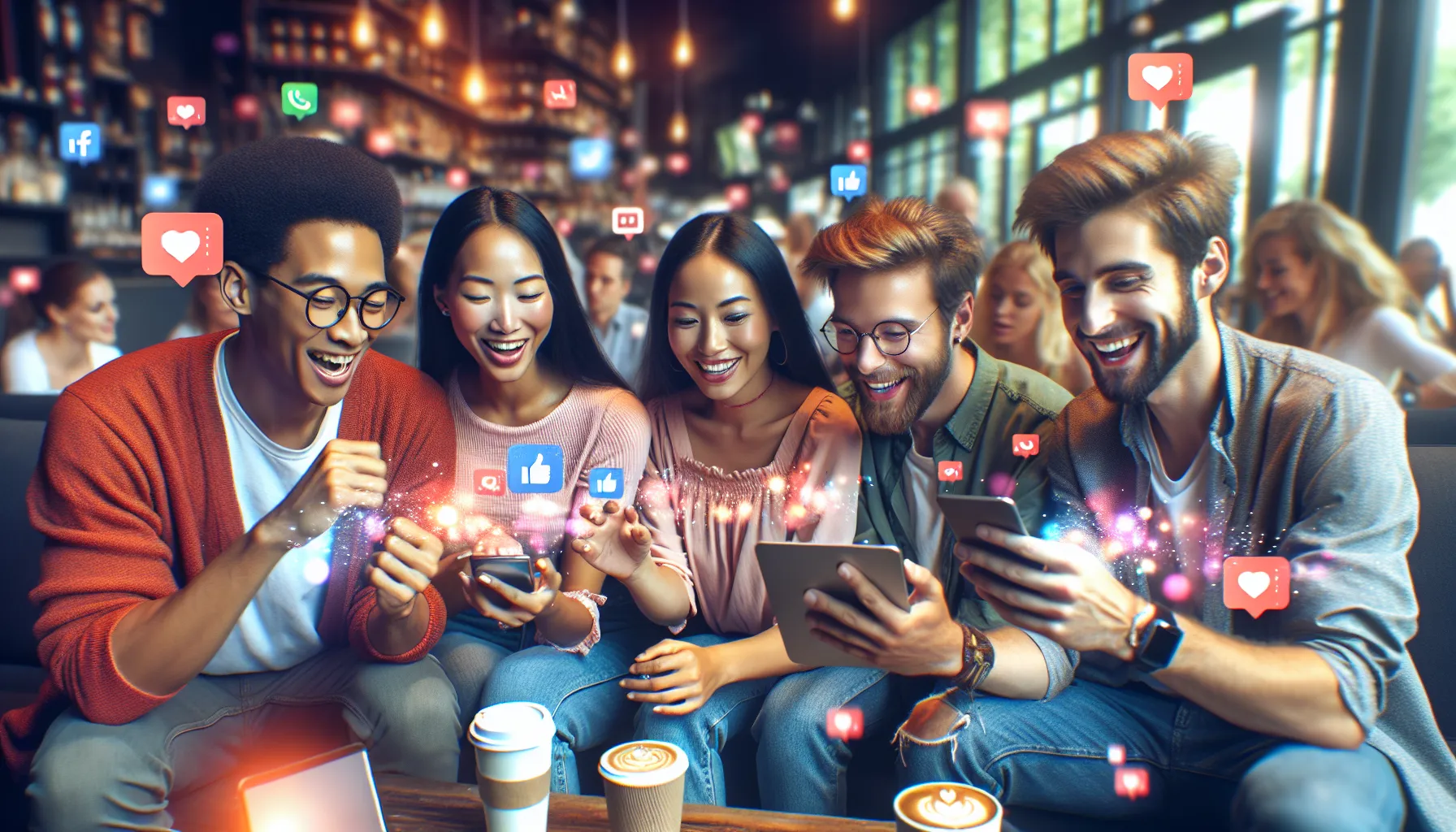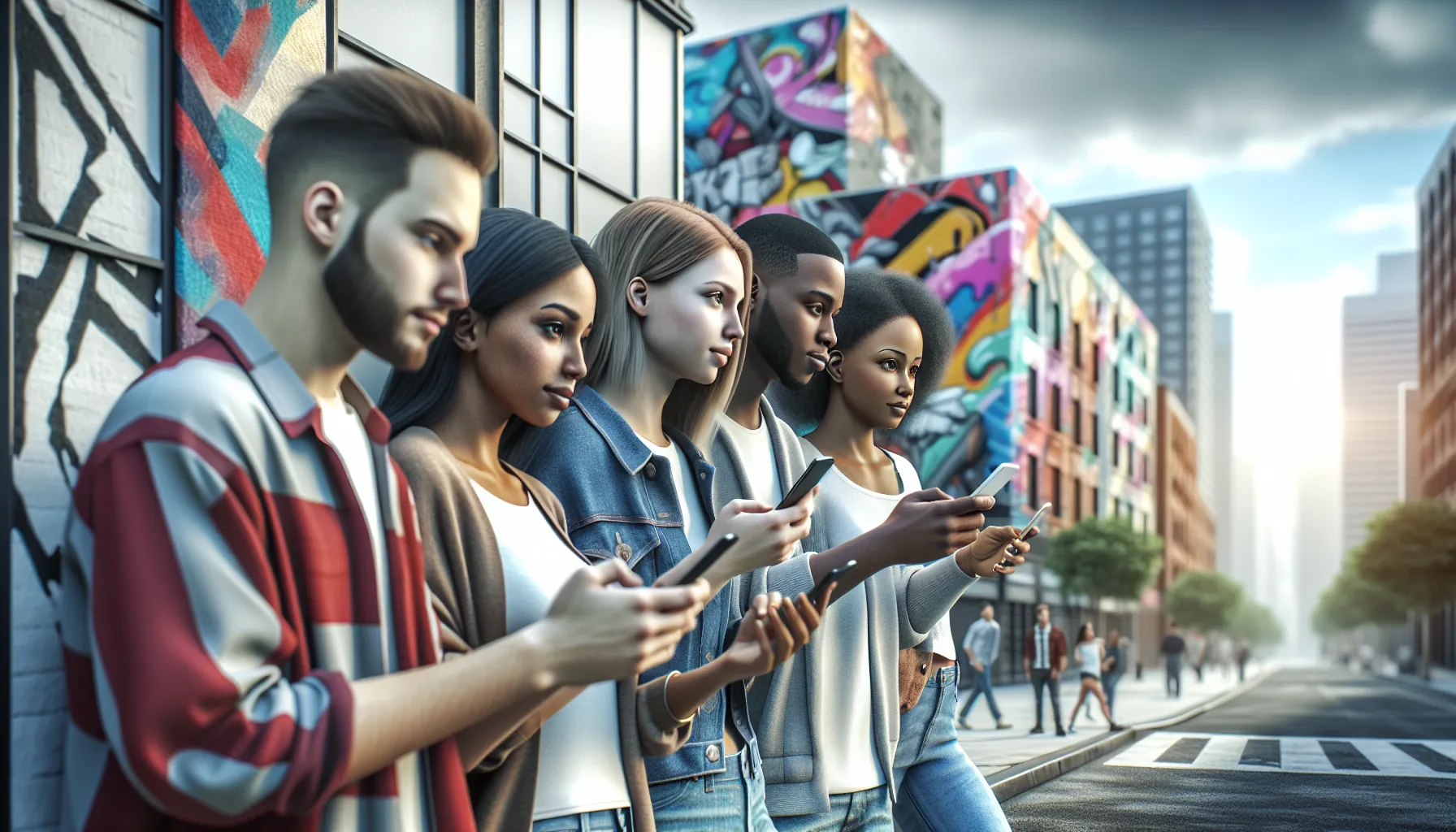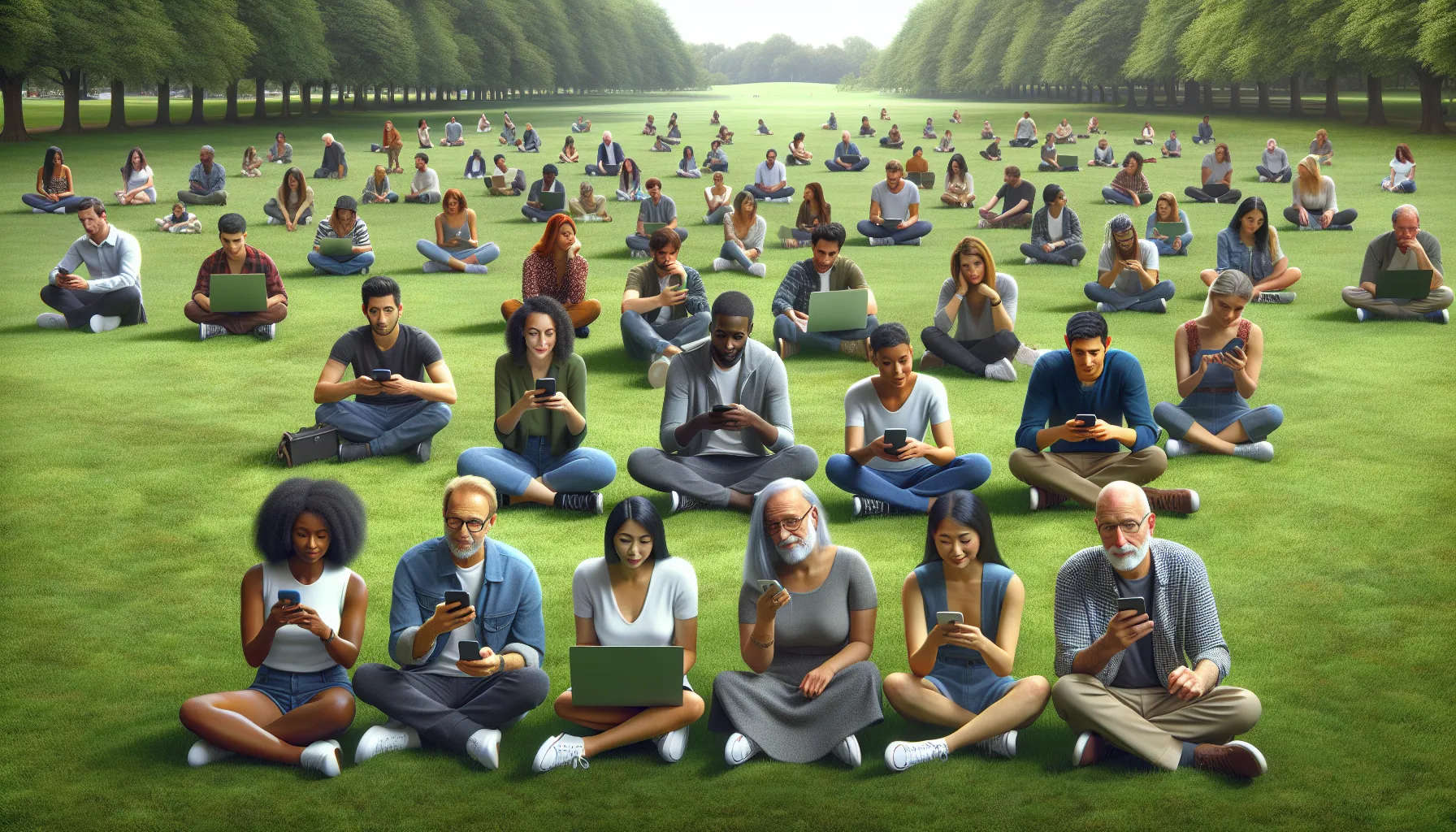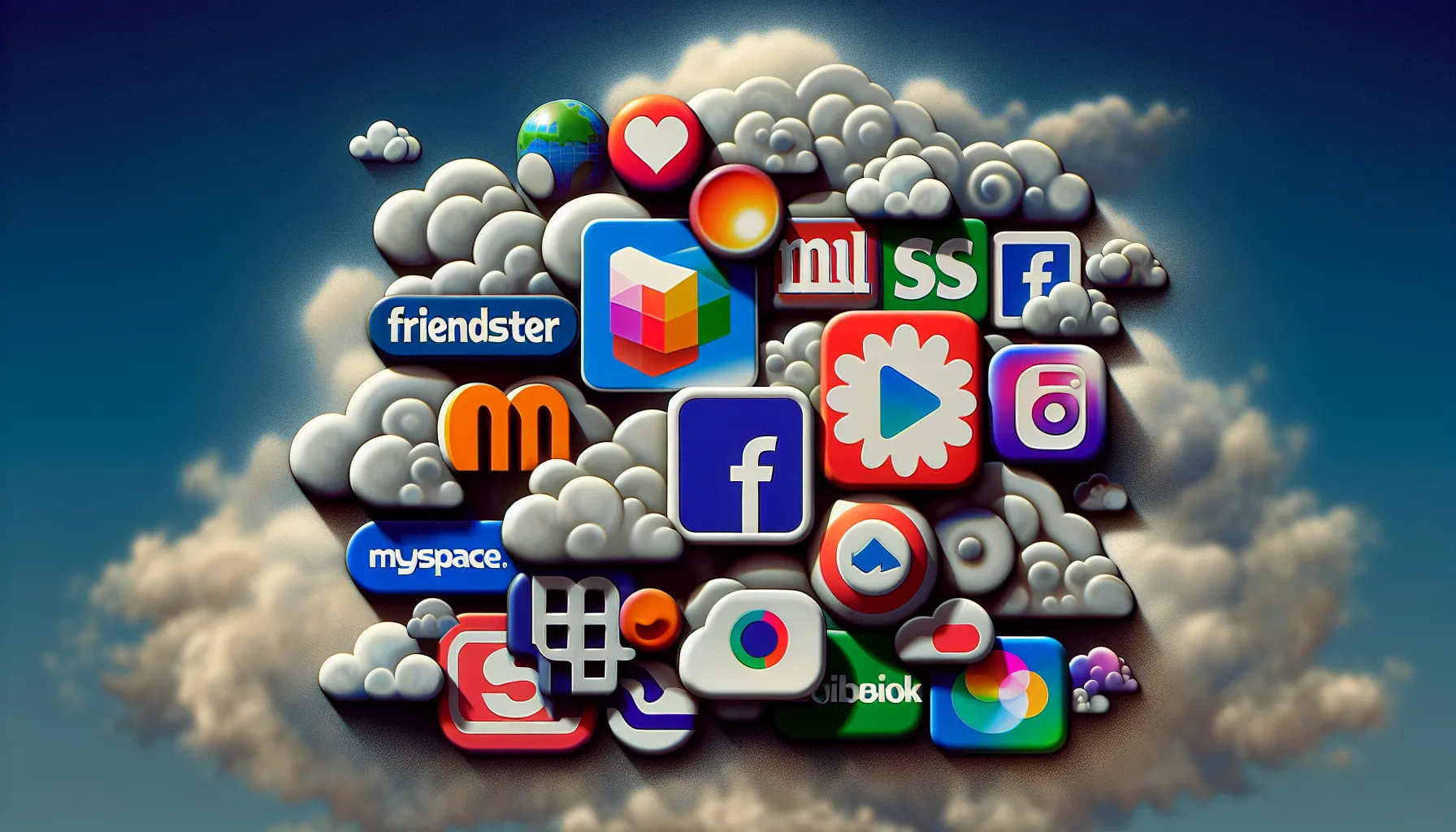Key Takeaways
- Social media originated from early technologies like Usenet, bulletin board systems (BBS), and CompuServe, which facilitated digital communication starting in the late 1970s.
- Six Degrees (1997) and Friendster (2002) were among the first recognizable social media platforms, setting the stage for modern networking features.
- The early 2000s marked the birth of mainstream platforms like MySpace (2003), Facebook (2004), and Twitter (2006), reshaping how users connect, share, and communicate globally.
- Mobile devices and multimedia-focused platforms like Instagram (2010), Snapchat (2011), and TikTok (2016) revolutionized accessibility and creative content sharing.
- Social media has transformed communication, influenced cultural trends, and driven business growth through advertising, branding, and e-commerce integration.
- By 2023, over 4.8 billion people actively use social media, reflecting its significant role in global connectivity and societal impact.
Social media feels like it’s been around forever, doesn’t it? It’s hard to imagine a world without scrolling, liking, and sharing. But have you ever wondered when it all began? The platforms we use today didn’t just appear overnight—they’ve got a fascinating history that stretches back further than most people think.
I’ve always been curious about how it all started. From the early days of basic online communication to the massive networks we’re part of now, social media has evolved in ways no one could’ve predicted. Let’s take a quick look at where it all began and how it’s shaped the way we connect today.
The Early Days Of Social Media
Social media’s earliest forms laid the groundwork for how we communicate online today. Its journey began with systems that connected users before evolving into recognizable platforms.
Precursors To Social Media Platforms
Early technologies like Usenet, bulletin board systems (BBS), and CompuServe enabled digital interaction. Usenet, launched in 1979, allowed users to post and share messages on newsgroups. BBS, popular during the 1980s, provided message boards accessed through dial-up connections. CompuServe, introduced in the 1970s, offered email and chat functionalities, connecting users on a global scale.
The First Recognizable Social Media Websites
Platforms like Six Degrees and Friendster marked the start of modern social networking. Six Degrees, launched in 1997, allowed users to create profiles and connect based on personal relationships, setting the template for future networks. Friendster, founded in 2002, became a pioneer in social discovery by linking users through mutual friends and shared interests. Both platforms foreshadowed features that dominate today’s social media.
The Birth Of Modern Social Media

Social media, as we know it today, began to take shape in the early 2000s with platforms that emphasized personal interaction, professional connection, and content sharing. These platforms reshaped communication and built the foundation for today’s networks.
The Introduction Of MySpace And Facebook
MySpace launched in 2003 and quickly gained popularity by allowing users to customize profiles, share music, and engage with others through personal networks. It set new standards for user-driven content and saw over 100 million accounts at its peak.
Facebook followed in 2004, initially restricted to Harvard students before expanding to other universities and eventually the public. Facebook focused on real-life connections, prioritizing verified identities and simplifying communication among friends and family. By 2012, it reached 1 billion active users, solidifying its dominance in the social media space.
The Emergence Of Twitter And Other Platforms
Twitter, introduced in 2006, revolutionized real-time communication with its focus on short, 140-character messages (later expanded to 280). It became essential for sharing news, opinions, and live updates, attracting millions of users globally.
Other platforms like LinkedIn (2003) tailored social networking to professional contexts, while YouTube (2005) created a hub for video-sharing. Instagram (2010) and Snapchat (2011) further diversified the landscape, emphasizing visual content and ephemeral sharing, which appealed to younger demographics.
How Social Media Evolved Over The Years

Social media has undergone significant transformations, adapting to new technologies and changing user behaviors. Its evolution reflects the growing influence of mobile devices and multimedia-focused platforms.
Mobile Accessibility And Smart Devices
Mobile accessibility reshaped how people interact with social media. Smartphones and tablets made platforms available 24/7, shifting usage from desktop to mobile. By 2010, social apps optimized for iOS and Android surged in popularity, driven by faster internet speeds and improved devices. Facebook launched its mobile app in 2007, while Instagram debuted as a mobile-only platform in 2010. Push notifications enabled instant updates, increasing user engagement and reliance on handheld devices.
The Rise Of Multimedia Sharing Networks
Multimedia networks transformed content sharing by emphasizing photos, videos, and live streams. Instagram allowed users to enhance images with filters starting in 2010. YouTube, launched in 2005, became a hub for video content across multiple niches, from tutorials to entertainment. Snapchat, introduced in 2011, brought disappearing content to social interaction, while TikTok, launched in 2016, popularized short, engaging video formats. These platforms encouraged creative expression and attracted massive global audiences.
The Impact Of Social Media On Society

Social media has reshaped how people communicate, share ideas, and interact globally. Its influence extends across communication, culture, and business, transforming societal norms and practices.
Changes In Communication And Connectivity
Social media fosters instant communication, breaking geographical barriers. Platforms like Facebook and WhatsApp enable real-time messaging and group discussions, promoting collaboration and relationships worldwide. By 2023, over 4.8 billion people actively use social media, highlighting its role in connecting diverse populations.
It also democratizes information sharing. Users create and distribute content, amplifying voices that might otherwise go unheard. Movements like #BlackLivesMatter and #MeToo gained traction on Twitter and Instagram, demonstrating the power of social platforms to mobilize action and drive awareness.
Influence On Culture And Business
Social media influences cultural trends, shaping music, fashion, and entertainment. Viral challenges, memes, and influencer content on platforms like TikTok and Instagram guide consumer preferences, defining popular culture in the digital age.
Businesses use social media for branding, advertising, and consumer interaction. Companies leverage targeted ads on platforms like Facebook and Instagram to reach specific demographics efficiently. E-commerce integrates with social channels; for example, Instagram Shopping enables users to purchase directly from product posts, streamlining the consumer journey.
This dual impact on culture and commerce underscores social media’s integral role in everyday life.
Conclusion
Social media has come a long way from its humble beginnings to becoming an essential part of our daily lives. It’s amazing to see how these platforms have evolved, shaping the way we communicate, share, and even do business. With billions of users worldwide, social media continues to grow and adapt, proving its ability to connect us in ways we never imagined.
As technology advances, I can’t wait to see how social media will continue to transform and influence our world. It’s clear that its impact is far from over, and the future holds endless possibilities for innovation and connection.
Frequently Asked Questions
What is the history of social media?
The history of social media begins with early technologies like Usenet and bulletin board systems (BBS), which allowed digital interaction. Platforms like Six Degrees (1997) and Friendster (2002) introduced user profiles and social connections, paving the way for modern networks like MySpace, Facebook, and Twitter that emerged in the early 2000s.
What was the first recognizable social media platform?
Six Degrees, launched in 1997, is widely considered the first recognizable social media platform. It allowed users to create profiles, list friends, and connect with others, pioneering features we see today in modern platforms.
How did MySpace and Facebook evolve social media?
MySpace gained popularity in 2003 due to customizable profiles and music sharing, while Facebook, founded in 2004, initially focused on real-life connections and verified identities. Facebook expanded globally and became the largest social network, surpassing 1 billion users by 2012.
What is the role of mobile technology in social media growth?
Mobile technology revolutionized social media by enabling 24/7 connectivity through smartphones and apps. Platforms like Facebook and Instagram leveraged mobile accessibility, leading to widespread use and growth, with apps optimized for iOS and Android devices.
How has social media influenced communication?
Social media has reshaped communication by fostering instant, real-time interaction and breaking geographical barriers. Platforms like WhatsApp and Twitter enable faster and more accessible communication, with over 4.8 billion users engaging globally as of 2023.
What impact has social media had on culture?
Social media has significantly influenced culture by shaping trends in music, fashion, and entertainment. Viral challenges, influencer content, and creative multimedia sharing on platforms like TikTok and Instagram drive cultural shifts worldwide.
How has social media changed business practices?
Businesses leverage social media for branding, advertising, and e-commerce integration. Features like Instagram Shopping and targeted ads streamline customer journeys, enabling companies to engage audiences and boost sales directly through social platforms.
What role does social media play in activism?
Social media empowers activism by democratizing information and mobilizing global movements. Campaigns like #BlackLivesMatter and #MeToo used social platforms to raise awareness, foster engagement, and drive social change.
Why is multimedia content so popular on social media?
Multimedia content, including photos, videos, and live streams, captivates audiences by being engaging and visually appealing. Platforms like YouTube, Instagram, and TikTok emphasize creative expression, driving their popularity and global adoption.
How has TikTok transformed the social media landscape?
TikTok has revolutionized social media by emphasizing short, creative videos and fostering viral trends. Its user-friendly interface and algorithm-driven content recommendation attract diverse global audiences, making it a leading platform for entertainment and expression.

